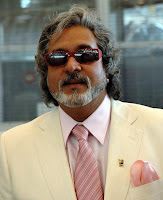Life is not a race. Irrespective of whatever you see people around you doing, it is not OK if you keep on pushing yourself to the extreme every so often. More frequently you do so, more easily the fatigue would settle in and more early you will have to get your heart or brain replaced. If you do get a time to enjoy with your family, then chose that option instead of working overnight in an overstressed office. Take a break every so often. Try to enjoy the life. Love your near and dear ones and share things with them. Bring gifts home and not office work!
Life is not only YOURS. There are a lot of other stakeholders to it. Despite whatever you feel like, there would be at least one more person whose happiness or misery depends on you. If you feel sad, then that person might be feeling even more so just because you feel that way. And for sure, your smile would brighten the day for that person too!
 Life is meant to be shared with others. Were it not so… please realize that YOU would have been the central character in “Christmas Carols” and not Uncle Scrooge. Count your blessings if you have a big, noisy family because it also means that you so many people to share your life with; people to take care of you when you are ill; people for you to confide in when did something stupid and people to protect you when you did something stupider; people to join you in the bandwagon when you ride that ghodi and go to your marriage.
Life is meant to be shared with others. Were it not so… please realize that YOU would have been the central character in “Christmas Carols” and not Uncle Scrooge. Count your blessings if you have a big, noisy family because it also means that you so many people to share your life with; people to take care of you when you are ill; people for you to confide in when did something stupid and people to protect you when you did something stupider; people to join you in the bandwagon when you ride that ghodi and go to your marriage.Life is not your personal fiefdom. Please understand that if a particular person has had the misfortune of working with you; that does not mean that you own him or her. It would not exactly be a disastrous mistake to congratulate them for anything, big or small. And a “Well done” once in a while would not go amiss.
On a lighter note:
Life is not your personal mobile message draft option. Please do realize that while typing LOL sounds kewl while chatting or in messages, always keep in mind that it is not to be used in live, verbal communication. It is high time that you realize that ACTUALLY laughing is perfectly acceptable in normal everyday communication; though not when you receive some bad news. Laughing then would only get you into a strait jacket and be deemed a nut case.
Please do realize that the real life not just a level in Need For Speed. It is much more. Hence, it is not cool that you hit an old woman crossing the road and run away. If you do that, you are bound to be caught. Unless you are the son of a politician, no matter how lowly, a film star or the son of any kind of billionnaires, even if it is a Mustard oil billionaire. High speed chases are not very common in the real life, especially considering the unique infrastructure of suburbs like Mumbai and Kolkata where a pedestrian barely gets space to walk, let alone drive. Delhi, thanks to the immaculate planning of Shielaji and Kalmadi sahib, has more potholes than a typical Emraan Hashmi movie, the roads are shot to hell and hence no chance to drive fast.
Images Courtesy: www.ericweisstein.com, www.empoweryou.com.au




















